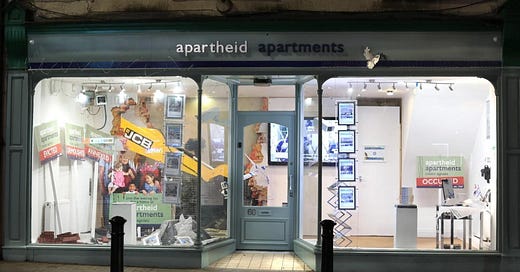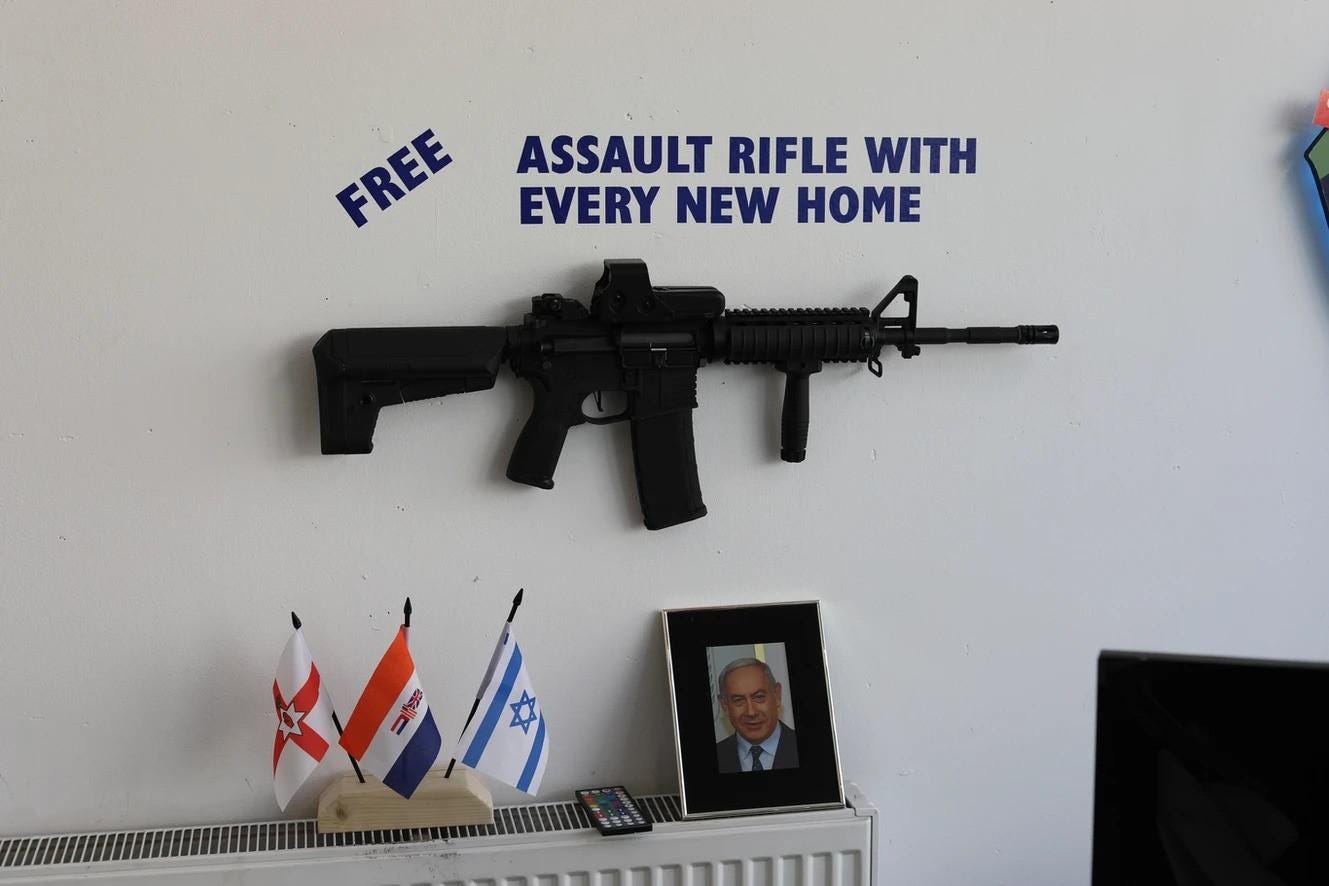I arrived in Doncaster on one of those sticky, humid Fridays where everything feels like it’s wearing a damp jumper. My journey from Salford was a slow, passive-aggressive trudge through Britain’s train system, £20 lighter and 90 minutes older, all for the privilege of sitting on a damp seat next to a teenager vaping Elf Bar smoke that smelled like artificial remorse. Northern Rail, as ever, managing to simulate both stagnation and forward motion at once.
But I wasn’t here for a scenic rail-induced breakdown. I was in town to meet with Mike Stubbs, the formidable curator, filmmaker and currently Creative Director at Artbomb, to talk through a potential short film project with my partner Ciara O’Rourke. We’d been speaking about making something rooted in Doncaster itself, its peculiar rhythms, empty high streets, accidental poetry.
Mike, being Mike, generous, sharp, and operating somewhere between encyclopedic arts oracle and whirlwind of loosely-connected genius, suggested we meet at Art Bomb, a former estate agency turned experimental art space on Hall Gate. We were barely five minutes into catching up, talking about everything from regional funding gaps to whether Doncaster could sustain a grassroots film scene, when he suddenly stopped mid-sentence, squinting toward a brightly lit window like something had just occurred to him from another dimension.
“Oh!” he said, voice skipping a gear. “You’ve got to see this. Darren Cullen’s got a new thing in there, Apartheid Apartments. Just opened. It’s brilliant. You’ll like it”
And with that, we were off, led by a man who might casually mention he once ran a moving-image biennial in a decommissioned submarine while unlocking the door to a building now housing the sharpest anti-Zionist satire in South Yorkshire.
Only moments later, we stepped inside, and it hit me immediately. Apartheid Apartments wasn’t just an installation, it was a confrontation. The building’s past life as an estate agency lent the whole experience a bitter irony. Here, where keys once changed hands for leases and mortgages, Cullen had recreated the cramped, subdivided, hyper-surveilled interior of a Palestinian apartment under occupation.
The spaces are dissected by clear plastic sheeting, suggesting a home where privacy has collapsed into performance, where every movement is watched or limited by force. It felt like entering someone else’s memory, one full of bruises and bureaucracy.
Cullen’s video work, created in collaboration with the supremely talented Michelle Tylicki, adds a ghostly, digital unease: furniture shifts without touching, light flickers like a nervous system, and unseen presences stalk through walls. It’s surreal, but not fantasy, it’s a political haunting.
If you know Darren Cullen’s work, none of this will feel entirely out of the blue. The Leeds-born artist has been skewering British militarism, consumer culture, and state hypocrisy for over a decade. His 2014 anti-recruitment comic Join the Army lives in the V&A’s permanent collection. His viral Action Man: Battlefield Casualties ads, made with Veterans for Peace, remain some of the UK’s most piercing anti-war media.
Apartheid Apartments is a natural evolution, his satire sharpened into spatial politics. No gag. No slogan. Just the cold reality of how daily life is disassembled in Gaza.
And Doncaster isn’t just a backdrop, it’s a crucible of working‑class strength and international solidarity. From the Great War, the town’s Royal Engineers, raised in local factories, were among the first British units to campaign in Sinai and Palestine in 1917, bridging Doncaster’s steel and sweat with far‑reaching theatres of conflict.
During WWII, local regiments mobilised and served in Palestine and Syria, troops from across Doncaster signing up not just for national defence, but into global history. Doncaster’s resilience has also stabilised newer arrivals. From Belgian refugees in 1914to modern-day migrants, many seeking safety in the UK, this is a town that rolls up its sleeves when the world unravels .
And today the Doncaster PSC (Palestine Solidarity Campaign) continues that lineage, standing guard through every Gaza bombing campaign, small-town activism in service of global justice.
It’s not just grassroots protest that’s being criminalised. Palestine Action, a group targeting weapons manufacturers, was officially banned this month under anti-terror legislation. Supporting them, even in words, now carries up to 14 years in prison. The vote wasn’t close: 385 MPs in favour, only 26 against.
This installation arrives at a time when even standing still in solidarity can land you in handcuffs. In the last few weeks, over 70 people have been arrested in the UK for protesting Israeli actions in Gaza, 42 in London alone, many of them simply holding signs reading “I oppose genocide, I support Palestine Action.”
As the legal noose tightens around political dissent, the art world continues to flutter in a safer realm, where critique is celebrated, as long as it remains in the gallery, behind plexiglass.
That contrast became sharply apparent at Bob Vylan’s recent London show. The punk-rap duo, fresh off being blacklisted from festivals over a Glastonbury chant of “Death to the IDF,” returned to stage defiant—but shifted the chant to “Free, free Palestine.”
It was a clever sidestep. Not because they feared being inflammatory, but because they wanted the message to land. They understood, as Cullen does, that sometimes delivery matters more than volume. The walls aren’t just physical, they’re linguistic. Say the wrong phrase, and you’re silenced. Say the right one, and maybe you open a door.
Cullen’s transparent walls and the UK’s police kettling of peaceful protestors are, in their own way, architectural siblings. One imprisons speech. The other imprisons bodies. Both turn living space, mental or physical, into hostile terrain.
Where Bob Vylan pivots to keep the message alive, Cullen builds a structure you can’t argue with. He doesn’t shout. He shows. And in doing so, he dares you to look through the wall, not just at it.
Standing inside Apartheid Apartments, I found myself thinking not only about Gaza, but about us, about the slow, stealthy way Britain has been constructing its own apartheid of empathy. Not with checkpoints or tanks, but with legislation, headlines, and the framing of protest as crime.
The installation runs 24/7. The lights never go off. That, too, is a metaphor. Oppression doesn’t sleep. Neither should witness.
The line from Doncaster to Gaza isn’t straight, but it is real. Artists, organisers, cultural workers, even the odd dazed writer on a Friday afternoon, all find themselves drawn into the same circuit of resistance. Not because it’s glamorous. Because it’s necessary.
We’re watching a shift: from gallery art to frontline installation. From passive viewing to direct confrontation. From private outrage to public solidarity. Whether it’s Cullen’s plastic sheeting or Bob Vylan’s rewired chant, there’s a movement forming—and it’s as translucent as it is tough.
Apartheid Apartments isn’t just an art piece. It’s a proposition: look through the wall. Ask what’s beyond it. And decide, finally, whether you’re walking away, or walking in.









